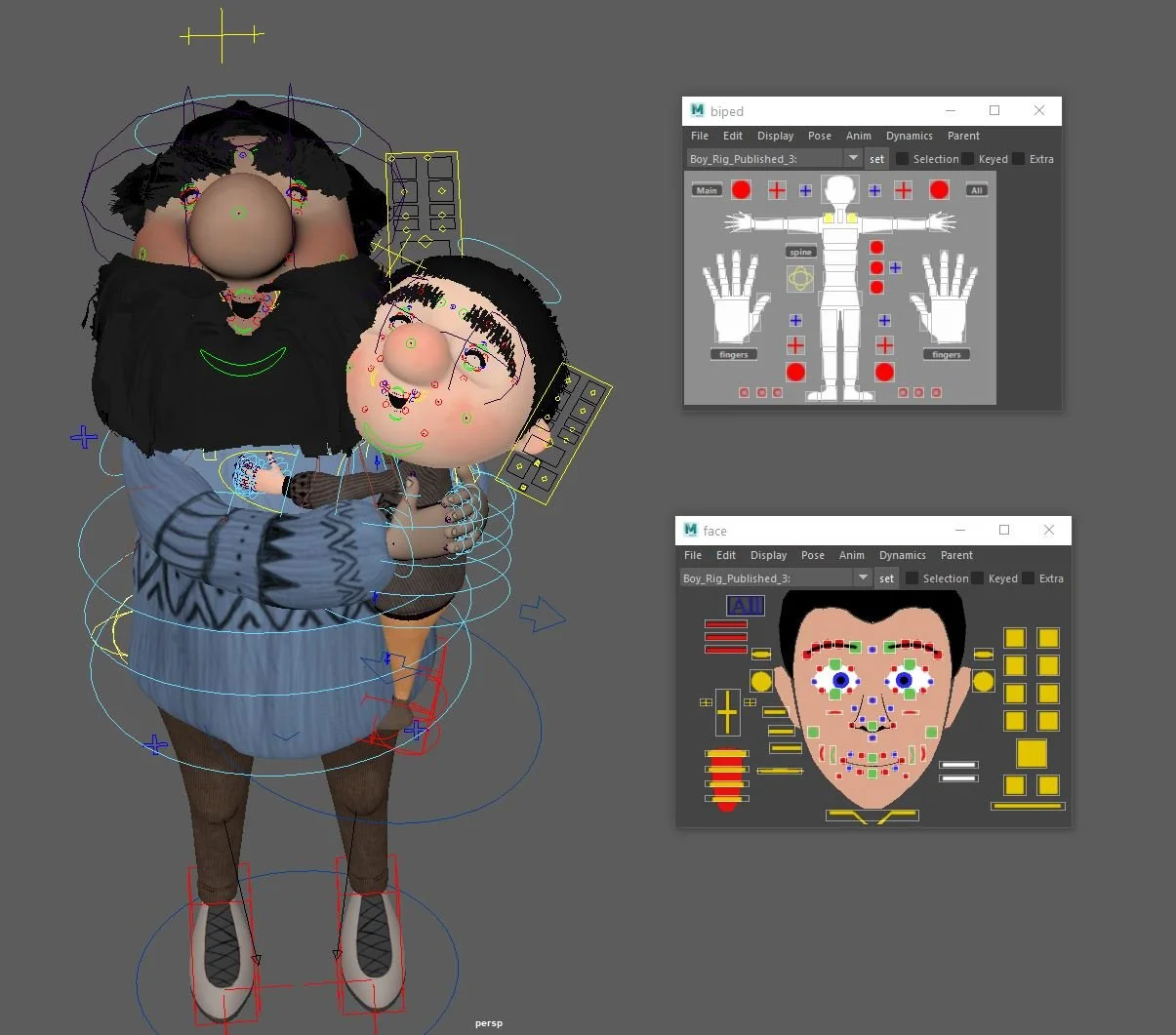Directing Animation in Realtime
Recently, we were asked to give a talk about our experience with animating in realtime at The View conference in Turin - exciting stuff! Unfortunately the continuing pandemic meant we weren’t flying over for pasta - instead we headed down to a local beach and recorded a casual and frank discussion about directing animation in real time and what that means.
It was a little awkward - we aren’t gifted in front of the camera, and there were several interruptions along the way (!), but covered some key topics which we think are part of a wider conversation about realtime animation and virtual production in a world where we are all increasingly working remotely.
We also gave a shout out on Instagram and asked if anyone else had any specific questions which we covered too. Below is a short round up and, if you really want to see make some bad dad jokes and us talk it all through, you can get a ticket and find the video here.
(Not just us of course! There are loads of amazing talks with people like Roger Deakins, Chris Miller, Phil Lord, Tomm Moore and more!)
What is Wylder and why did you use Unreal?
Wylder is the name of a short film we made earlier as a way of demonstrating our storytelling within Unreal Engine. Having moved 90%+ of our workflow to realtime, we wanted to share our experiences and learning. However, many of our projects were under NDAs, so we created Wylder as our calling card and a window into our process with Unreal Engine.
Based on the children's book by Maia Walczak, Wylder doesn’t have the visual style for something you might envision made in a games engine. Its beautiful hand drawn illustrative style really spoke to us and was the perfect challenge to recreate in Unreal Engine.
Wylder looks very different from other Unreal animations and games, how did you go about creating the look?
We started working on the look directly in-engine whilst the animatic and previz were being worked on. Starting with the end shot, we played around with texturing and lighting until we had a set look and style. Whilst we wanted to honour the beautiful illustrations of the book, if you are creating something in 3D there has to be a reason and we wanted to put a new spin on the visuals and add new life to the characters.
For the environments, often the artwork itself would be brought into the engine and extrapolated from there - taking the textures and extruding them into the shapes of the models.
A lot of the final effect comes from the hair, which went through a process of trial and error, first using hair cards and then deciding to use the groom system in Unreal with Ornatrix.
Will productions in Unreal cost less / be done quicker?
It’s a good question! And one without an exact answer. Of course, immediate or close to immediate rendering does reduce a huge amount of time in processing that is the norm in the animation pipeline. However, the question of does this directly correlate to costing less and taking less time is hazy. Often in reality, this “saving” gets spent on more design and decision making, as this real time process allows for much more hands-on creativity and ends up on-screen. We have found with much of our service work, it can help both budgets and schedule lengths if we can utilise certain aspects of the new pipeline.
So directly is it cheaper? Not necessarily, but you do get much more bang for your buck.
When creating, how often do you use game style loops instead of fully animating scenes?
So far, not at all. The projects we have taken on have required bespoke animation and are usually centred on one or two characters performing the main action. However, we certainly see potential for this in larger scenes with background characters, or even projects where there is more interactivity (think choose your own adventure).
Do you still do storyboards? Is it much easier to stray from that in Unreal and is it good?
We do still use storyboards, with all the tech in the world nothing can beat a rough hand drawn sketch to share ideas quickly! However, there is some software called Praxinos which you can use in-engine and create an animatic from within the viewport. It’s exciting stuff we hope to try out soon.
What do you think will be next for creating animations in Unreal?
Bringing more of the pipeline into one environment - modelling tools, animation etc a centralised pipeline - utilise assets for immersive / crossmedia - it's all ready for films, games, series, VR, trailers, cut scenes etc.
We are also excited to see how Virtual Production continues to develop and be brought into pipelines on live action shoots.
That is a whistlestop tour of Unreal and reciting animation in real time. We are continuing to explore and test what is possible in this new technology and approach. Currently, we are working on a new project that incorporates interactivity and storytelling, so that viewers can customise their own content. Keep your eyes peeled for more!




